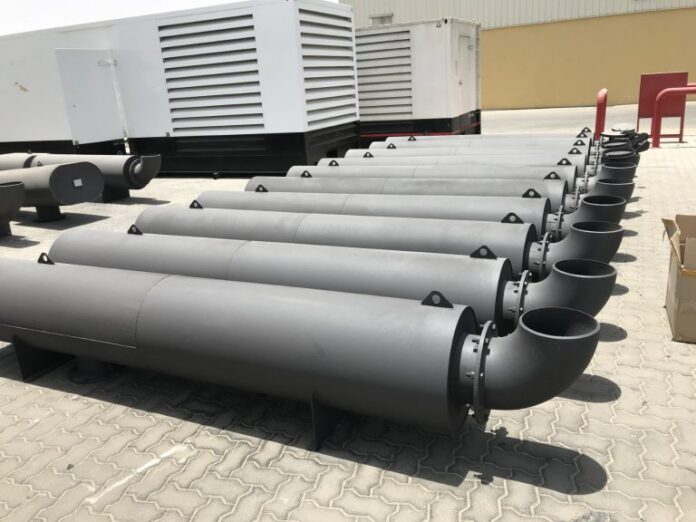Generators play a crucial role in various sectors, from providing backup power in residential and commercial buildings to ensuring continuous operations in industrial and healthcare facilities. Despite their utility, generators are notorious for producing significant noise, which can disrupt daily activities, impact health, and violate noise regulations. One effective solution to mitigate this issue is the use of sound attenuators. This article delves into the importance, types, and benefits of sound attenuators for generators, highlighting how they contribute to quieter and more efficient power generation.
Understanding Sound Attenuation
Sound attenuation refers to the reduction of sound intensity, achieved by absorbing, dampening, or isolating noise. In the context of generators, sound attenuators are devices or materials designed to minimize the noise produced during operation. These attenuators can be install in various parts of a generator system, including the exhaust, air intake, and enclosure, to reduce the overall noise output.
The Importance of Sound Attenuators
1. Compliance with Noise Regulations
Many regions have strict noise regulations that limit the permissible noise levels in residential, commercial, and industrial areas. Generators, especially larger ones, can easily exceed these limits, leading to fines, legal issues, and community complaints. Sound attenuators help ensure that generator noise stays within acceptable levels, facilitating compliance with local laws and regulations.
2. Improved Working Conditions
Excessive noise can create an uncomfortable and potentially hazardous work environment. Continuous exposure to high noise levels can lead to hearing loss, increased stress, and decreased productivity among workers. By reducing generator noise, sound attenuators contribute to a safer and more pleasant working environment.
3. Enhanced Community Relations
Generators are often used in residential areas for backup power during outages. Without proper noise control, the operation of these generators can disturb neighbours and strain community relations. Sound attenuators help maintain a peaceful neighbourhood by significantly reducing noise pollution.
Types of Sound Attenuators for Generators
Sound attenuators come in various forms, each designed to address specific noise sources and frequencies. The main types include:
1. Exhaust Silencers
Exhaust silencers are among the most common sound attenuators used in generator systems. They are installed in the exhaust system to reduce the noise produced by the expulsion of combustion gases. There are several types of exhaust silencers, including reactive, absorptive, and hybrid silencers.
- Reactive Silencers: These use chambers and baffles to reflect and cancel out sound waves. They are effective for low to mid-frequency noise.
- Absorptive Silencers: These use sound-absorbing materials to dampen noise. They are particularly effective for high-frequency noise.
- Hybrid Silencers: These combine reactive and absorptive elements to provide broad-spectrum noise reduction.
2. Acoustic Enclosures
Acoustic enclosures, or generator canopies, are specially designed housings that encase the generator. They are lined with sound-absorbing materials and are engineered to block and absorb noise from all parts of the generator. Acoustic enclosures are highly effective at reducing noise levels and are available in various sizes and designs to fit different generator models.
3. Air Intake and Discharge Attenuators
Generators require air for combustion and cooling, which involves intake and discharge systems that can be significant noise sources. Air intake and discharge attenuators are designed to reduce the noise produced during these processes. These attenuators typically use a combination of baffles and sound-absorbing materials to minimize noise without restricting airflow.
Benefits of Using Sound Attenuators
1. Noise Reduction
The primary benefit of sound attenuators is the significant reduction in noise levels. Depending on the type and design, sound attenuators can reduce generator noise by up to 30 decibels or more. This reduction can make the difference between a generator that is a nuisance and one that is barely noticeable.
2. Enhanced Efficiency and Longevity
Sound attenuators can also contribute to the efficiency and longevity of generators. By reducing the strain caused by noise and vibration, attenuators help minimize wear and tear on generator components. This can lead to fewer breakdowns, lower maintenance costs, and a longer lifespan for the generator.
3. Increased Marketability
For manufacturers and sellers of generators, offering models equipped with sound attenuators can be a significant selling point. Noise reduction features are highly attractive to consumers, particularly those in residential areas or industries where quiet operation is critical. This can lead to increased sales and a competitive advantage in the market.
Conclusion
Sound attenuators are an essential component in modern generator systems, addressing the critical issue of noise pollution. By effectively reducing noise levels, they help ensure compliance with regulations, improve working conditions, and enhance community relations. Whether through exhaust silencers, acoustic enclosures, or air intake and discharge attenuators, these devices play a vital role in making power generation quieter and more efficient.
As the demand for generators continues to grow, the importance of sound attenuation cannot be overstated. Investing in high-quality sound attenuators not only benefits the immediate users but also contributes to a more harmonious and less disruptive environment. For anyone involved in the design, manufacture, or use of generators, understanding and utilizing sound attenuators is key to achieving optimal performance and satisfaction.

